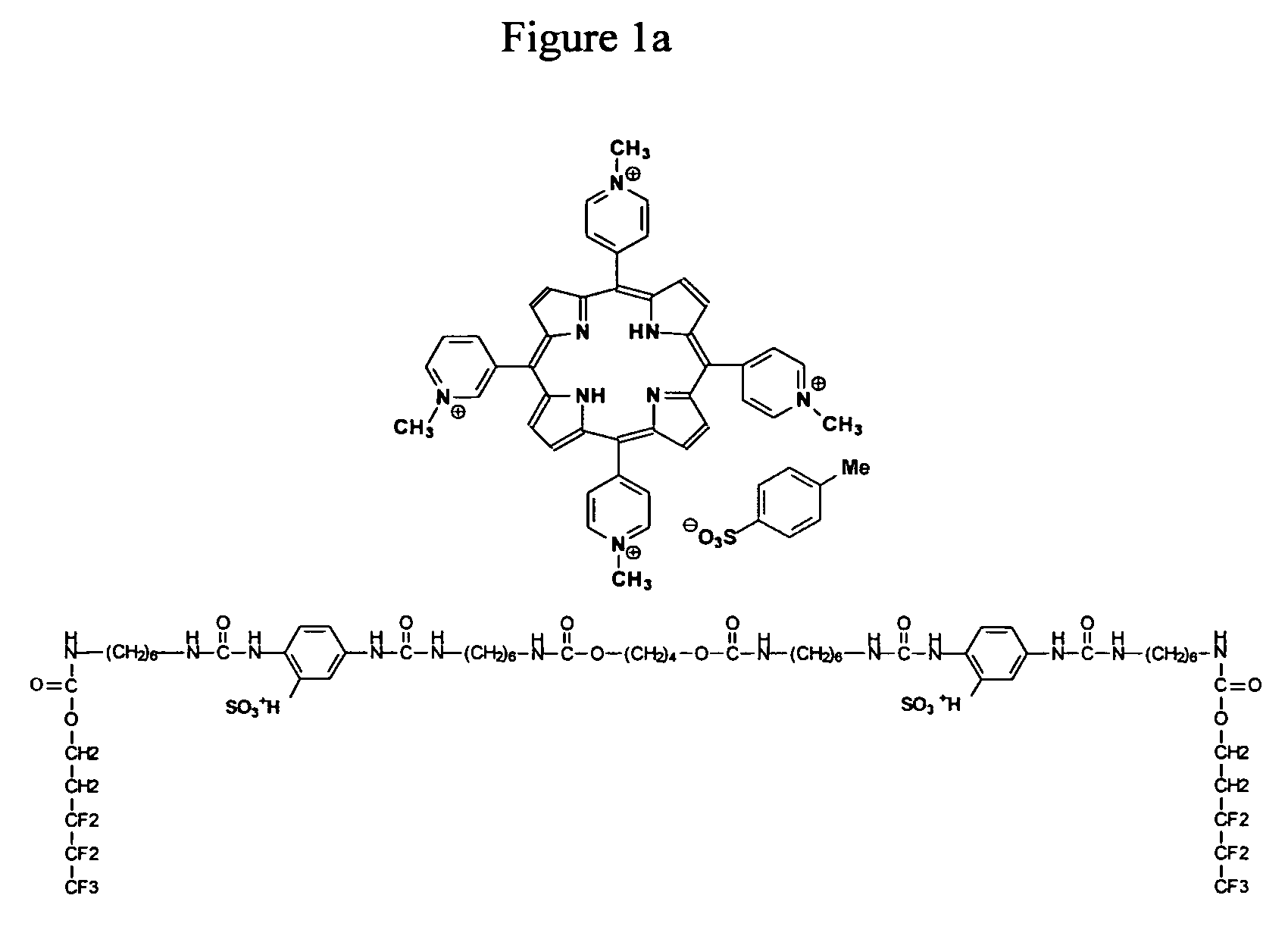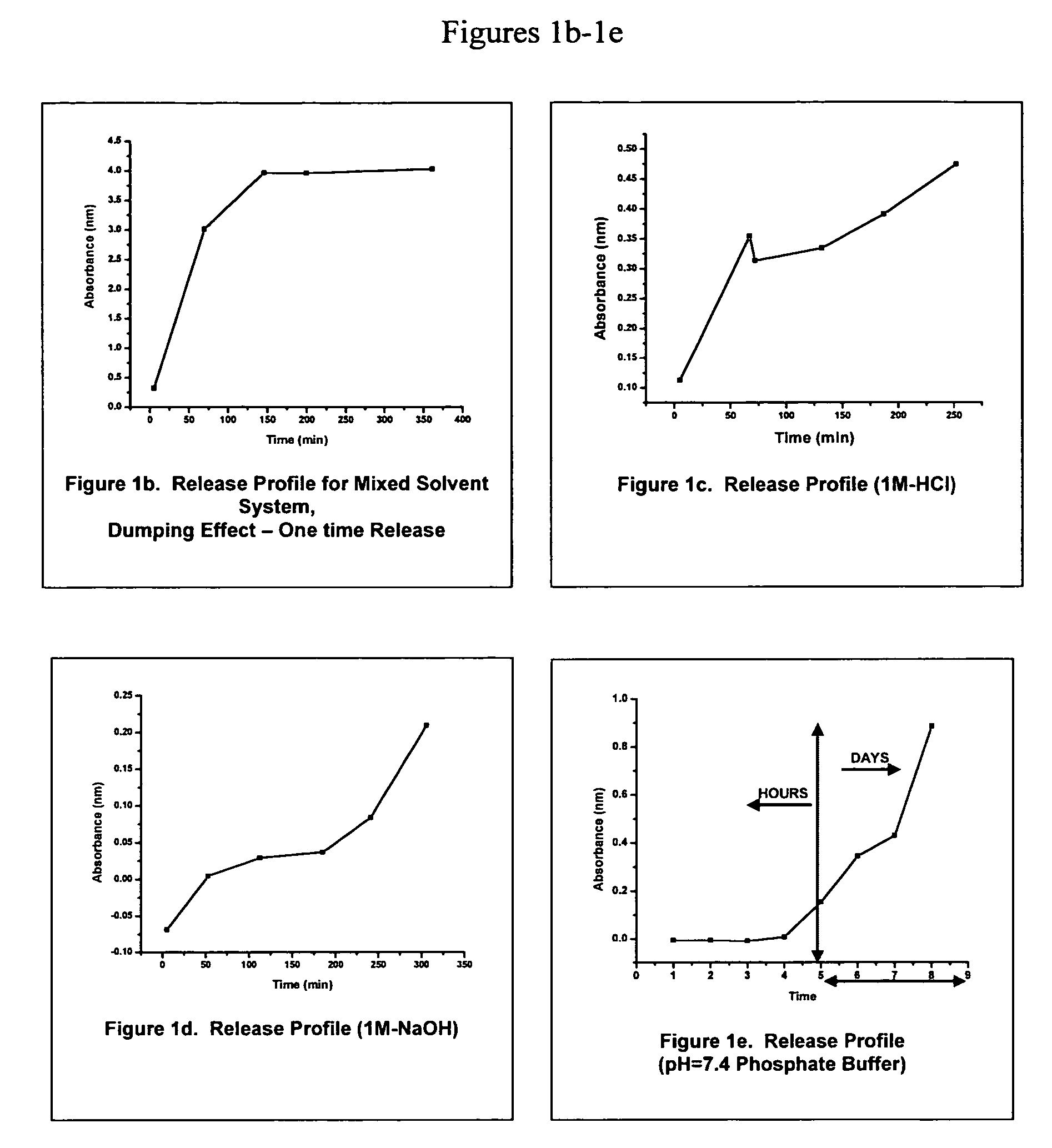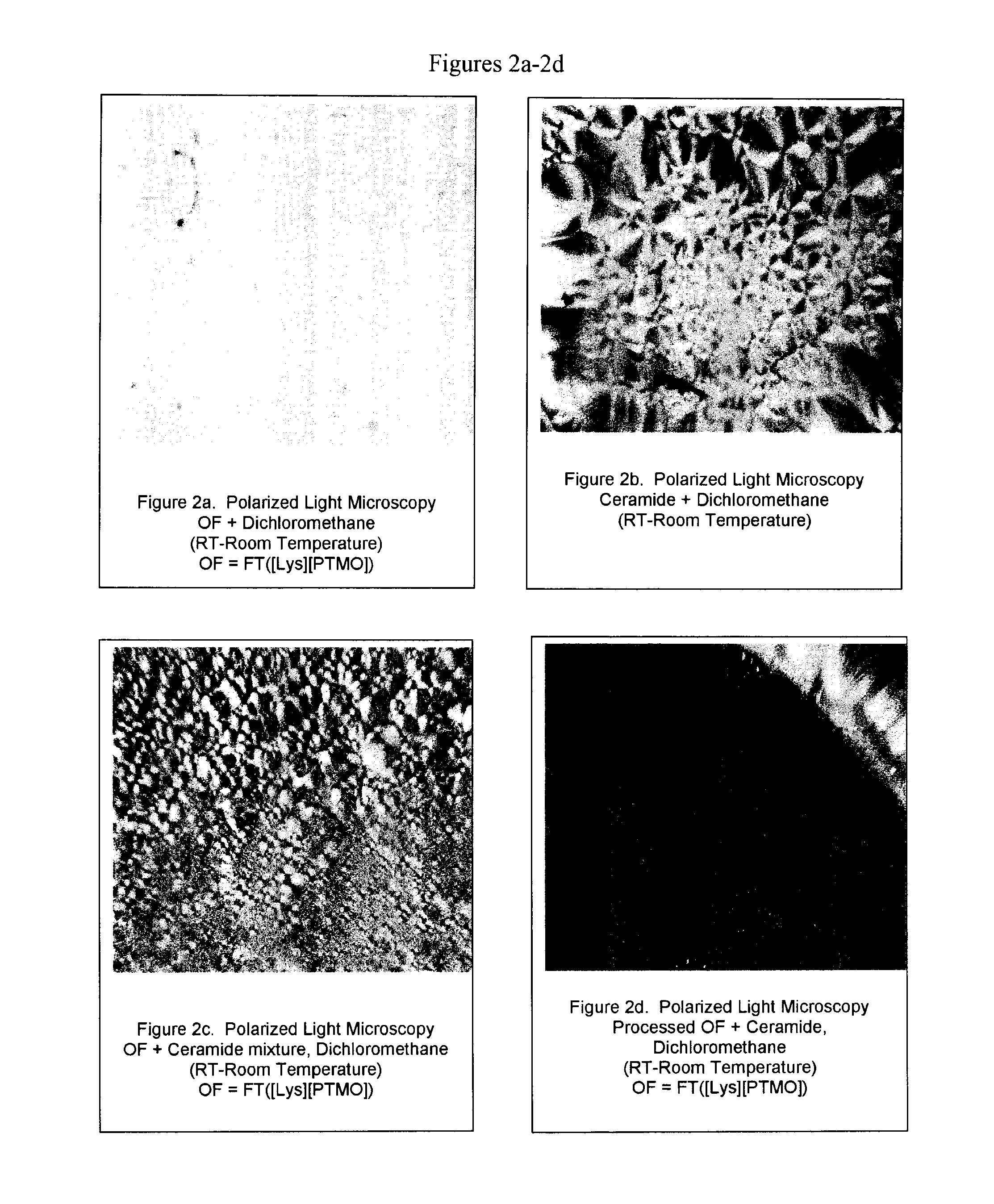Methods and compositions for the delivery of biologically active agents
a biologically active agent and composition technology, applied in the direction of antibacterial agents, drug compositions, prostheses, etc., can solve the problems of phase separation, phase separation, and polymer mixing reduce entropy, so as to reduce thrombosis and offset inflammatory responses
- Summary
- Abstract
- Description
- Claims
- Application Information
AI Technical Summary
Benefits of technology
Problems solved by technology
Method used
Image
Examples
example 1
FT([HDI-DABS][PTMO]):TMPP
1a: Synthesis of FT([HDI-DABS][PTMO])
[0120]Polytetramethyleneoxide (PTMO) (predried, 10 g) was dissolved in dimethylacetamide (DMAc) (50 mL). A freshly prepared solution of 1,6-hexane diisocyanate (HDI) and 2,5-diaminobenzenesulfonic acid (DABS) (9.2 g) in DMAc (50 ml) was reacted with the solution of PTMO under an atmosphere of nitrogen for two hours. Fluoro alcohol (11.7 g) dissolved in DMAc (30 mL) was added to the reaction mixture. Dibutyltin dilaurate was used as a catalyst. The reaction mixture was sealed and kept under nitrogen and the temperature was maintained between 60-70° C. for 2.5 hours. Purification was achieved by a precipitation technique. The end product was dried in a vacuum oven for 24 hours. The XPS analysis area was 700×300 microns in size with the following atomic content, C(50.9%), N(7.0%), O(19.7%), S(1.2%) with a total fluorine content of (21.2%), by weight. The IR analysis was in accordance with the chemical structure 3349.68 (cm−1...
example 2
FT([LYS][PTMO]):Ceramide
2a: Synthesis of Polymer FT([LYS][PTMO])
[0123]Polytetramethyleneoxide (10 g, 0.0097 mol, predried) was dissolved in DMAc (50 mL). Lysine diisocyanate (4.11 g, 0.0194 mol, freshly distilled) in DMAc (25 mL) was added drop-wise to the polytetramethyleneoxide solution. The pre-polymer reaction mixture was sealed and maintained under a nitrogen atmosphere between 60-70° C. for two hours. The end capping agent, fluoro oligomer (11.74 g, 0.0194 mol) was dissolved in DMAc (25 mL) and added drop wise to the pre-polymer reaction mixture. The reaction solution was sealed under N2 and stirred overnight at room temperature. Dibutyltin dilaurate was used as the catalyst. The product was precipitated in a mixture of water and ether for the recovery of the catalyst and removal of residual fluoro oligomer. The final product was dried under vacuum. NMR and IR analysis confirmed the presence of methyl ester groups. The ester functional groups were used for a number of reaction...
example 3
FT[LYS(Cyd)][PTMO]):Methyl Violet 2B
3a: Synthesis of Polymer [FT[LYS(Cyd)][PTMO])]
[0126]Cyclodextrins (CyD) are cyclic, water-soluble, non-reducing compounds built from six, seven or eight sugar units. They possess hydrophobic cavities and capable of interacting with a great variety of molecular species. Geometrical rather than chemical factors are decisive in determining the suitability of the guest compound. The lysine based oligofluoro (OF) drug delivery matrix backbone (2a) was used as a platform for interacting with cyclodextrin, crown ethers and / or calixerenes.
[0127]6-Monodeoxy-6-monoamino-β-cyclodextrin.HCl salt (0.174 g) was dissolved in MilliQ water (0.5 mL). To de-salt, 1.0 N NaOH (50 uL) was added to neutralize the HCl and precipitate the 6-monodeoxy-6-monoamino-β-cyclodextrin (CyD) as a free base. The CyD was centrifuged at 1000 rpm for 10 minutes and the supernatant was removed. The free base 6-Monodeoxy-6-monoamino-β-cyclodextrin was purified and dried under vacuum. Th...
PUM
| Property | Measurement | Unit |
|---|---|---|
| molecular weight | aaaaa | aaaaa |
| molecular weight | aaaaa | aaaaa |
| weight % | aaaaa | aaaaa |
Abstract
Description
Claims
Application Information
 Login to View More
Login to View More - R&D
- Intellectual Property
- Life Sciences
- Materials
- Tech Scout
- Unparalleled Data Quality
- Higher Quality Content
- 60% Fewer Hallucinations
Browse by: Latest US Patents, China's latest patents, Technical Efficacy Thesaurus, Application Domain, Technology Topic, Popular Technical Reports.
© 2025 PatSnap. All rights reserved.Legal|Privacy policy|Modern Slavery Act Transparency Statement|Sitemap|About US| Contact US: help@patsnap.com



